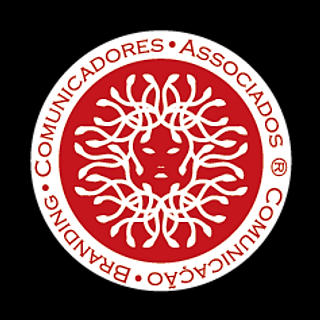How do you position your brand?
- Comunicadores Associados
- Dec 6, 2021
- 4 min read
We have a complex country, something that seems to be generally agreed.
With a business fabric made up of 97% of micro and small companies, and only 2% of medium-sized companies.
This is according to the study recently published by the Francisco Manuel dos Santos Foundation.
It will be said that this does not have much to do with how one stands. Will be?
Many factors influence how a company, product or brand is perceived by the market and its customers.

One of the problems of this type of business structure, which by the way is not very far from European values, turns out to be the lack of technical and human resources to invest in innovation and in the management of these assets.
And when it comes to innovation, this can be related to hiring qualified technicians who have both the competence and the "freedom" or autonomy and authority to act within organizations.
But what does all this have to do with how companies, products and brands position themselves?
Positioning, like marketing, is relevant and fundamental to how the market and consumers perceive any of these elements.
It is a way, and part of the strategy, of being in the market, and it is born between what is desirable and what is real.
And strategy is something that affects the organization as a whole.
It takes into account several factors and achieving a position implies, above all, knowing the customers (current and potential) or their potential market.
This factor, which assumes special relevance, because from the perspective of what the market buys or is interested in, the consumer / customer has an opinion that is worth more than the opinion of an internal element of the organization.
And from a marketing perspective, this is one of the pillars of its performance. Without this knowledge and information, any formulation falls apart.
This approach is problematic in many organizations.
The development and innovation of products that are market-oriented and are born from within the organization to the outside, instead of being developed based on information generated by the market.
In other words, a logic to create a product, based on the "insights" of someone in the organization, sometimes by its own leader. And if it is true that there are leaders with an appetite and a certain "sixth sense" in this matter, this is often not enough.
For this reason 80 to 90% of new products (on a positive estimate), as well as some organizations, do not survive the first impact on the market and its commercialization attempts.
This was one of the topics covered in the podcast "The Marketing Book Podcast", where guest Kim Whitler discusses the relevance of positioning and these perspectives.
Basically, and as the author explains addressing the content of her book "Positioning for Advantage", or also for those who had a classic training in marketing, the product should not and cannot be produced from within the organization, using marketing merely as a "selling" tool pushing that product to market.

Marketing must collaborate in the development of new solutions, namely from a conceptual point of view, making a strategic contribution, namely through its ability to gather and interpret information from the market and its customers, ensuring the viability and success of these products for the market. that are intended.
Many of the "flops" could be reduced if companies developed an approach to studying the market and the desires (and usage habits) even before starting to produce any solution.
Just as a house cannot be started from the roof, marketing should not be seen as an intermediary between production, market and sales.
Someone, or group, that after the fait accompli, has the mission (sometimes practically impossible) to sell, promote/advertise a product that is not adjusted to the market and the desires/interests of consumers and the market.
Marketing is more than that. More than communication and sales.
It is a process that must and is involved in all phases of an organization's business. Only then is there the potential for developing solutions tailored to the market and what customers want, need, or that they hadn't even realized they might need.
The fact that organizations are small, returning to the issue of the business fabric, or having a lower turnover, cannot be a premise for dispensing with the marketing activity or its correct application/implementation.
Nowadays, also referring to the dynamization of some digital activity.
Consultants, when there is no possibility of creating internal teams, are the answer to having ways to decide in an informed way the actions to be developed.
Usually avoiding unnecessary investments and expenses, resources that can be directed towards more productive and profitable activities.

Knowledge and information are valuable.
And for those who have fewer resources, it has more value than gold.
The solution must always go through:
knowing the market and what the consumer needs/values (studying);
Develop solutions around this information;
create solutions and test them according to the assumptions that the preliminary studies understood from the needs;
only after market validation starts production;
the last phase in which marketing will intervene, after following the steps of knowing the market, participating in the development of the solution, etc., will be the dissemination, promotion and collaboration in the sale of the product.
Studying and knowing the market on the ground is the best, and probably the only way to reduce risks and reduce losses and investments.
Hence, collaboration with sales is essential, avoiding silos. But this is a theme for another publication.
The positioning of a product, brand or organization is always the positive result of this set of interactions and internal collaboration.
It will be possible, during the entire process, to identify and develop that which is how a market/customers perceive the product/brand/organization, and which will respond to all the information and feedback received from the targets.
It is necessary that companies and other organizations start a process of changing their mindset in order to correctly and seamlessly integrate marketing collaboration into their success.
Marketing-mix is the traditional translation of this logic, starting with the development of the "Product", finding the "Price" that serves the organization's profit goals, "Promoting" the product and finding the right "Distribution" so that it reaches the market. interested customers.
It cannot be limited to participating in isolated points of the process.
And is your organization ready to change the Mindset?






Comments